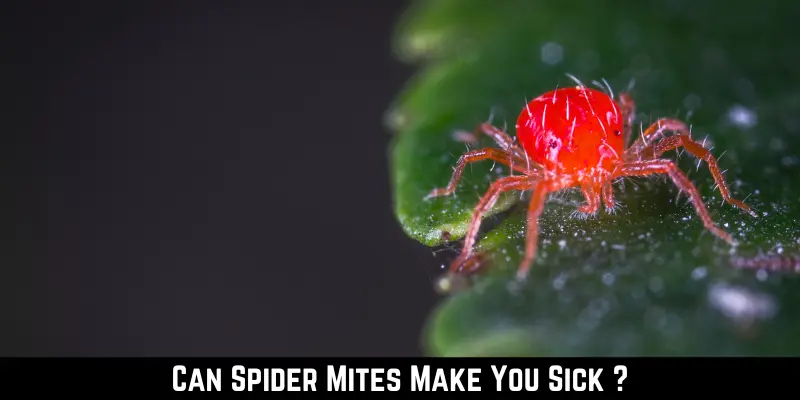There are many different types of mites most of them are contagious. The mites spread diseases from animals to animals, animals to humans, and human to human. Spider mites live on the plants and can ruin their structure. But you must be wondering, can spider mites make you sick?
No, spider mites cannot make you sick. They can infest your house and the garden but cannot cause any diseases to humans. However, spider mites are deadly to plants. They injure the plant cells and tissues with their mouth by sucking the plant sap.
Spider mites can act as a vector. Therefore, transmitting diseases from one to another. Continue to read to find more detail on the spider mites’ impact on humans and plants.
What Problems Do Spider Mites Cause?
Spider mites are a common plant pest in the garden or yards. They are fatal to the plants and can kill them within a few weeks of infestation.
Spider mites cause damage while feeding by crushing the plant cells and tissues with their tiny whip-like mouth consuming the plant sap.
Their mouths are designed for piercing and penetrating the induvial plant cells, which cause small yellow and white dots on the plant leaves and stems. When spider mites feed in a close location to each other on the plant, it develops a yellow, brown, or bronze hue on the leaves.
Therefore, turning the entire plant brown. Multiple feedings on one plant’s leaves can make it dry and then fall off from the plant. Typically, they live in colonies on the underside of the leaves. In a severe infestation, you might notice the webbing on the plants, which can stop plant growth altogether.
Do Spider Mites Transmit Diseases?
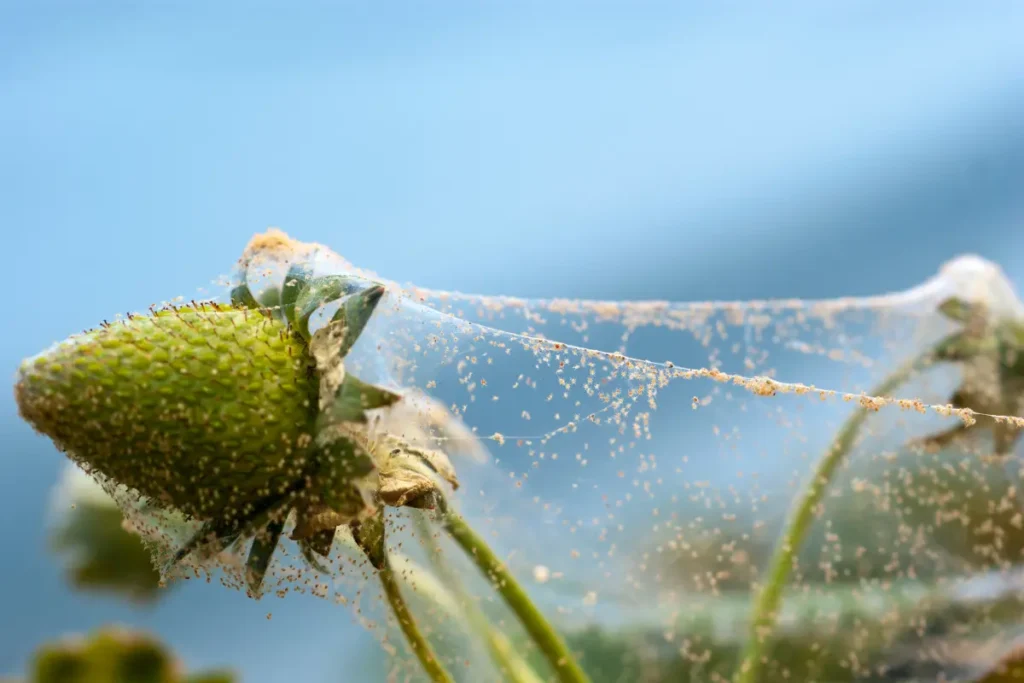
Yes. Spider mites transmit diseases among plants. Some species of spider mites can move from one plant to another, spreading the disease. Therefore, acting as a vector for plant diseases.
Many disease-causing organisms are transmitted via the spider mites, for example, the potato virus Y that affects the Solanaceae plants, the cotton curliness virus, the southern bean mosaic virus, the tobacco ring spot virus, and the tobacco mosaic virus.
Spider mites’ infestations are common in areas with a hot and dry environment. The damage on the leaves is seen as chlorosis. The spider mite infestation can spread over a large area. It can begin from one plant and eventually move into the entire garden, yard, or nursery. They walk from one plant to another.
Infestation begins from top to bottom and then to another plant. During this movement, it will carry the diseases from the previous plant to the next plant. The situation can create a nightmare if the infestation is in the crops.
What Can Spider Mites Do To Humans?
Spider mites cannot do anything to humans. Spider mites are only dangerous to indoor and outdoor plants. They are not lethal to humans as they are to plants.
The spider mites are specifically adapted to live on plant cells. They cannot survive at all on the human skin cells. Their digestive system and needle-like mouth suck the plant sap.
The mouth of the spider mites is a needle that penetrates the plant cells and sucks the plant sap. Therefore, destroying the plant tissues, including stomata, while feeding. These needle-like mouth causes no damage to the human skin or cell as they cannot suck human blood.
Each bite of the spider mite on the plant cell is small. Therefore, one bite mark cannot be visible to the naked human eye. However, the collective bite on one location will appear as a white or yellow dot.
Can Spider Mites Bite Human?
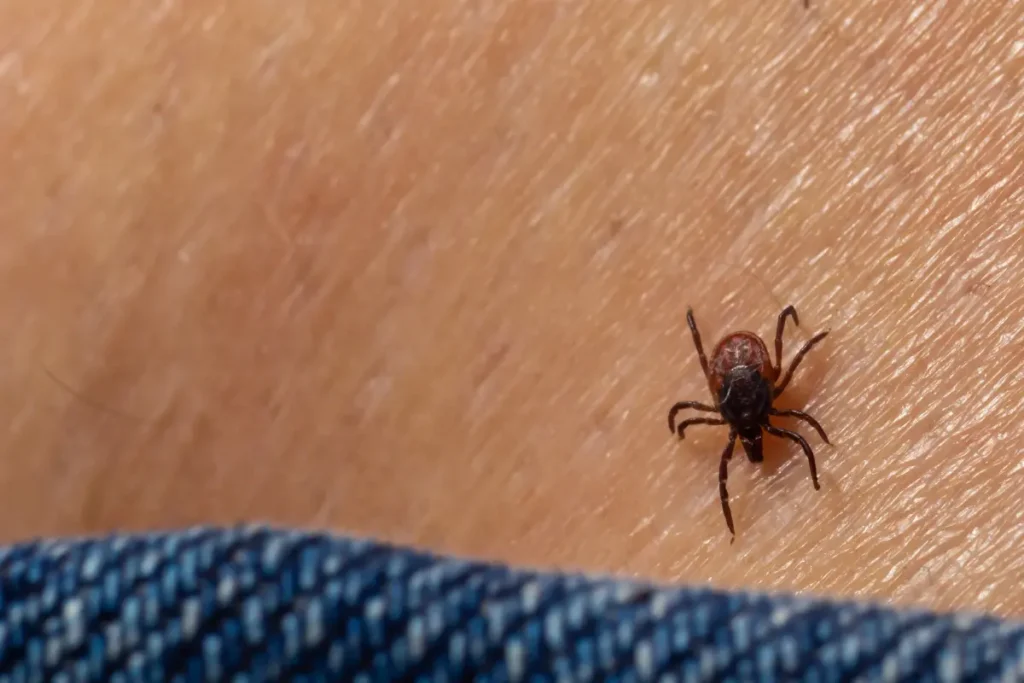
Spider mites can occasionally bite a human. However, the chances are less. One can say the possibility of a spider mite biting a human is less than one percent.
Even if the spider mites bite the human, it will go unnoticed. It will bite a human when starving, and this bite will not cause anything other than a small, red pimple similar to a rash.
They cause no harm, including irritation or disease the human. Spider mites are tiny microscopic organism that is not adapted to survive on the human skin or the blood.
According to 2018 research, two-spotted spider mites are herbivores. Their digestive system is physiologically capable of digesting plant macromolecules.
Do Spider Mites Burrow In Skin?
No, spider mites cannot burrow in human skin. The spider mite penetrates the plant cells and lives undersurface the plant cells. Spider mites cannot survive on human skin.
It can crawl for a while on the skin and then move out without causing any harm. Spider mites are adjusted only to live on the plant cells in the hot and dry environment.
On the other hand, human skin is warm and humid, making it impossible for spider mites to live for more than a few minutes.
Plants provide spider mites with the feed and the living space. They live by sucking the plant sap, which is integral for plant survival. It contains water and nutrient for plant growth.
When the spider mites feed the plant sap, it causes nutrient deficiency in the plants leading to death.
Can Spider Mites Infest A House?
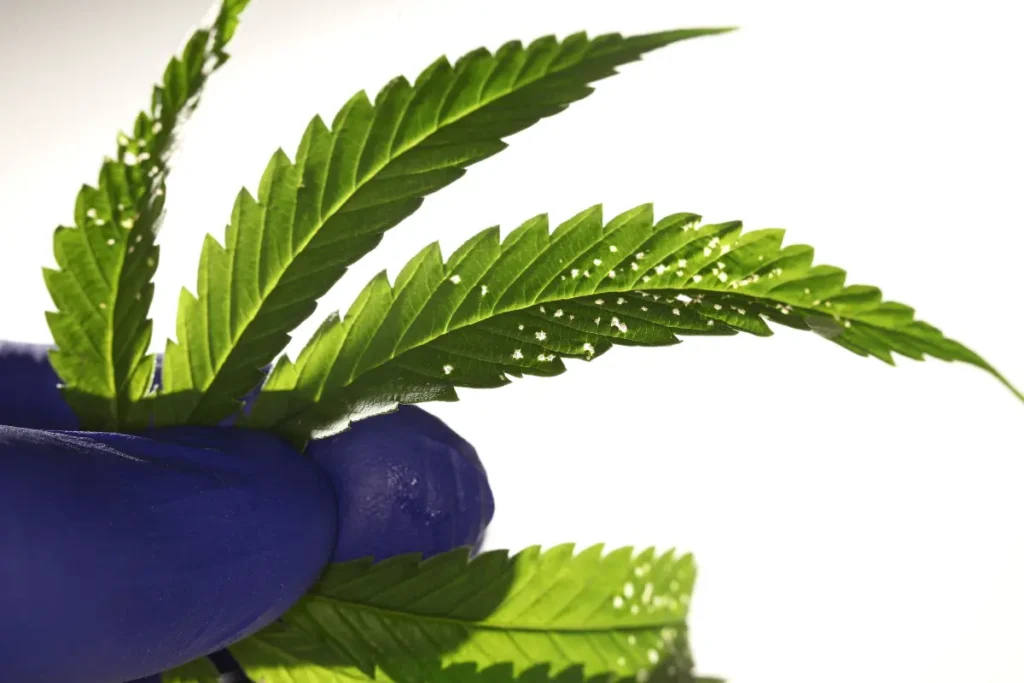
Spider mites can infest the house garden or the yard. They are one of the most harmful pests that affect house plants. They can severely harm or perhaps kill the plant within a few days.
Spider mites can’t live in house furniture, including curtains, carpets, and other household things, as they only thrive in a hot environment and not warm and humid conditions.
If they move in the carpets or other upholstery, it will not survive more than a few days because there is no feed for them to live. It will starve to death. Spider mites are lightweight and can move inside the house through a breeze from the window or can crawl inside the house. They can be carried in the clothing from the garden, or house pets can also bring them inside the house in their fur.
What Symptoms Do Spider Mites cause?
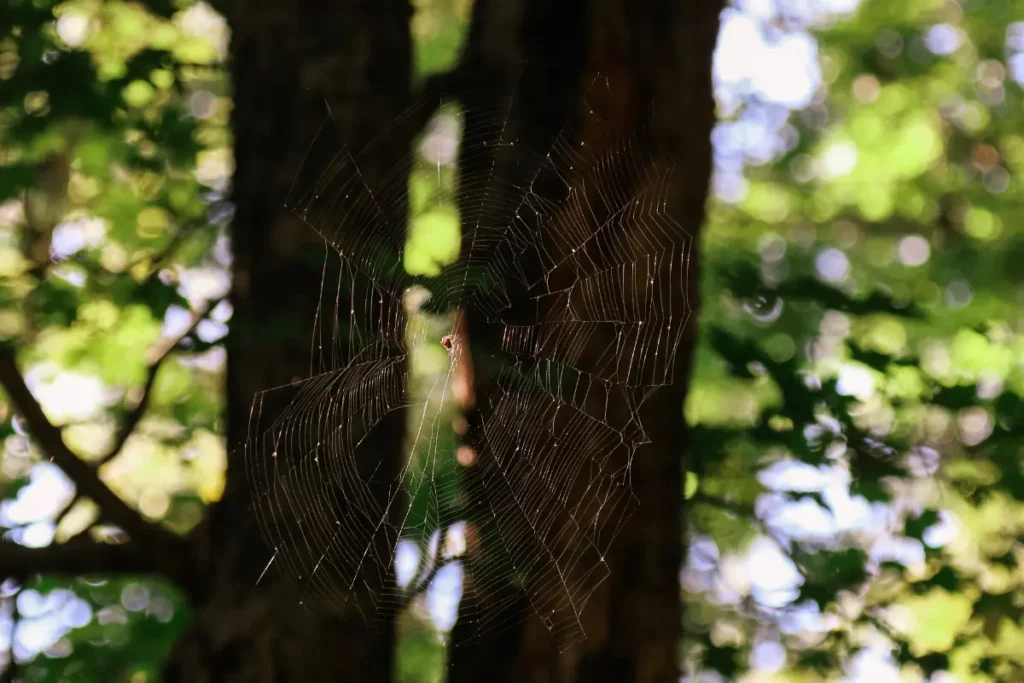
Spider mites’ infestation in the plants will begin to show symptoms within a few days of infestation. Symptoms of the injury caused by spider mites in the plants are discoloration, flecking, wrinkling, dry and curling up leaves.
You can also see tiny white and yellow dots on the tree leaves. These dots will first appear on the top leaves of the tree or plant and gradually move towards the lower parts.
You might see silky webs around the tree. They make these webs to mark their home on the plant and to protect their eggs. Spider mites have a whip-like mouth part through which they damage the plant cells to suck the sap.
Therefore, damaging the plant structure and depriving it of nutrients. Severe infestation leads to plant death. The symptoms are visible within a few days. Therefore, proper care of the plant is essential.
How To Treat Spider Mites Infestation?
Spider mites do not cause any harm to humans, but they are dangerous to plants. Therefore, proper care of indoor and outdoor plants is essential. Following are a few tips and tricks to eliminate spider mites.
- Make a solution by mixing warm water with dishwashing soap. Spray this on the spider mites to suffocate them to death.
- Use rubbing alcohol on the plant pots and the garden furniture to kill spider mites. Avoid using rubber alcohol directly on the plant.
- The essential work is natural pesticides like neem oil and rosemary oil. Apply these oils to the plant leaves. They can suffocate spider mites to death.
- Isolate the infested plants with spider mites to prevent severe infestation in all the plants.
- Spider mites cause dehydration. Therefore, water plants regularly and keep them in the sunlight for proper nourishment. Also, change the dried soil, if necessary.
- Regular and proper care of the plant, along with the use of pesticides, prevents spider mite infestation.
Conclusion
Spider mites cannot make humans sick, but it is fatal to plants. They are lightweight and have a needle-like mouth which helps them suck the plant saps causing dehydration and nutrient deficiency. Spider mites cause leaves to discolor, dry, curl up, and can even have a wrinkled appearance.
The plants with severe spider mites infestation can die within a few days. Therefore, proper care is necessary. The human body or skin provides no benefit to the spider mite. The maximum harm a spider mite can cause to a human is a rash. Similarly, spider mites cannot live inside human clothing or household things like carpets or curtains.
References
The Digestive System of the Two-Spotted Spider Mite, Tetranychus urticae Koch, in the Context of the Mite-Plant Interaction- Frontiers
Salvador Gutiérrez, Inés Hernández, Sara Ceballos, Ignacio Barrio, Ana M. Díez-Navajas, Javier Tardaguila, Deep learning for the differentiation of downy mildew and spider mite in grapevine under field conditions, Computers and Electronics in Agriculture, Volume 182, 2021.
